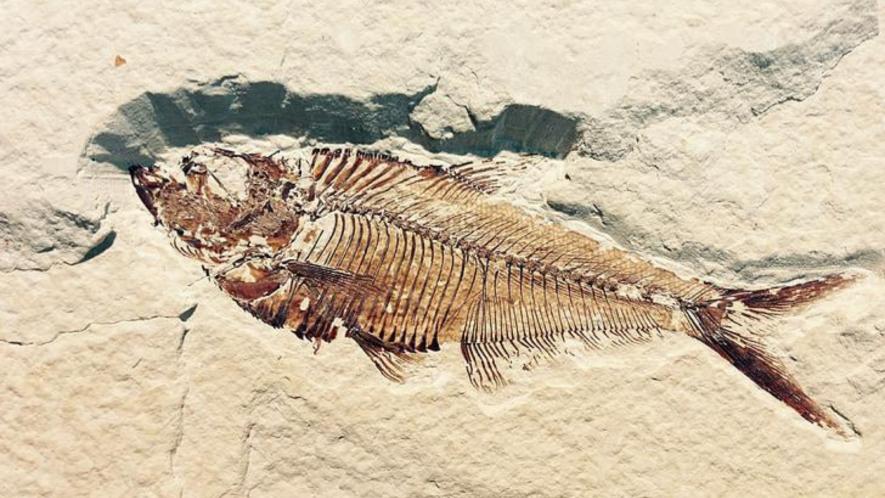Did Nocturnality Help Fishes Survive Mass Extinction Events?

Image taken from the internet, used for representation only.
Mass extinction events are characterised by the wiping out of population across species. However, few species could survive through such upheavals on Earth until today. What makes them unique is a question for biologists, especially those who study evolution and look at what evolutionary edge these species possess to thwart a challenge as massive as mass extinction.
A group of scientists have recently come out with a compelling aspect. They propose that nocturnality helped certain species survive the mass extinction events. The research has been published recently in the preprint server bioRXiv.
Numerous scientists have addressed this old evolutionary question, and one of the sources has been the fossil records. However, fossil records are limited to providing morphological insights like the body shape or size, etc., that give an edge to those species who survived mass extinction events. These are insufficient to provide information about behavioural traits.
The new research attempted to understand whether day-night activity patterns (diurnality and nocturnality) in bony fishes gave them an evolutionary edge to survive through the past four mass extinction events. The researchers claimed that their analyses provided four lines of evidence about nocturnality providing evolutionary advantage during mass extinction.
Maxwell Shafer, an evolutionary biologist at the University of Toronto and the lead author of the bioRxiv research paper, along with his colleagues, started with living fish. Notably, fish represent half of all the vertebrates (those having backbones). The team discovered the day-night behaviours of around 4000 bony fishes and 135 cartilaginous ones (an example is the shark). The researchers plotted the day-night behaviour of the fishes on a fish tree of life. In biology, the Tree of Life depicts the evolution of life and the relationship between organisms, whether extinct or living.
With numerous sophisticated computer simulations, the team attempted to find the possible day-night activity patterns amongst the ancestors of modern fish. The computer simulations were carried out until they obtained the best reproduced day-night pattern of today’s fish species.
The research attempted to trace the behavioural patterns of fish to 145 million years. Around this time, thousands of species suffered volcanic eruptions across Earth, engulfing the skies with darkness and warming the planet. Many species were snuffed in the event. Some fish species, like Mesturidae (a fish having powerful teeth to crash corals), vanished. Some others, like Acipenseriforms that swam in the same water, could survive. From Acipenseriforms, the modern-day sturgeons evolved.
Shafer’s team found that some fish, like the sturgeon, remained nocturnal throughout history. The computer modelling of the team suggested that many of the fish species that could survive through the mass extinction events were nocturnal. It was also found that fish have shuffled from being nocturnal to diurnal more times than other vertebrates.
Analyses of Shafer’s team revealed that the shuffling between nocturnal and diurnal among fish species happened mostly during the periods where mass extinctions were elevated, 145 million years and 66 million years ago.
One of the reasons nocturnality is helpful for fish species during mass extinction events is temperature spikes during the periods. The nocturnal species could evade the lethal daytime heat by avoiding coming out in the daytime. After the environmental upheavals eased, the nocturnal species could occupy the empty niches by switching to diurnality and diversifying. This was also the strategy that many mammals adopted after dinosaurs went extinct.
As Elizabeth Pennissi writes in an article at Science about the research findings, previous studies also revealed that many mammalian species were nocturnal to avoid the dinosaurs. After the extinction of the dinosaurs, these species came out in the daytime and later flourished well. Previous studies also revealed amphibians (those species that require water during their early life, like frogs, toads, etc.) being nocturnal throughout much of their evolutionary history that became diurnal later on. Shafer’s team infers that nocturnality was a survival strategy for the vertebrates during environmental catastrophes.
In a statement, Roi Maor, an evolutionary ecologist at Royal Botanic Gardens, Kew, praising the research findings, said in Pennissi’s Science article, “This work stretches, perhaps to the limit, the power of current evolutionary modelling techniques to figure out what happened millions of years ago.”
However, Maor is also cautious about the claims of the study.
“The key conclusion of the study—that nocturnality conferred an evolutionary advantage is supported by the evidence, but there could be more than one reason for such a survival pattern.”
Experts opine that when the Earth became darker 66 million years ago, the diurnal predators could not find other animals as they died off. On the other hand, many of the nocturnal species feed on detritus (waste or debris). The detritus did not disappear as quickly as other species.
“The advantage could be something about the feeding ecology rather than nocturnality per se,” commented Stanford University palaeontologist Jonathan Payne in Pennissi’s article.
Get the latest reports & analysis with people's perspective on Protests, movements & deep analytical videos, discussions of the current affairs in your Telegram app. Subscribe to NewsClick's Telegram channel & get Real-Time updates on stories, as they get published on our website.














